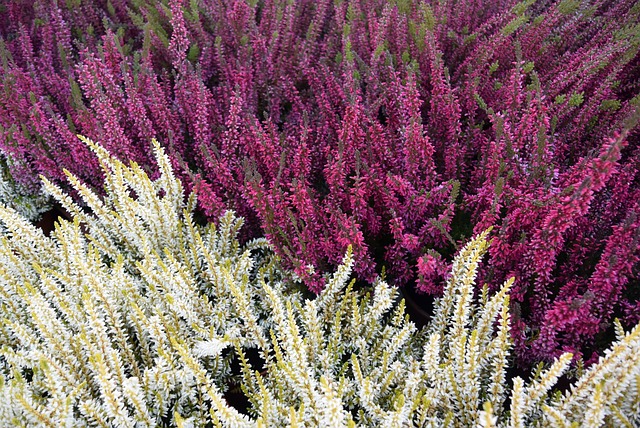Smaller heaths, 1-5 m2, can be placed at the edge of a rocky area or in a corner of the garden. Larger heaths should preferably be planted in irregular flower beds, along paths, along walls, and in front yards. It can be planted on level ground or on gentle slopes. On level ground, the ground can be deepened and undulated, or conversely, the soil can be heaped up and planted with heather and other plants of different heights. Heathlands should be grassland on one side.
The soil for heath formation should be a light humic acid soil with a pH of 4-5. Soils that are moderately moist and calcium-free are desirable. Acidity can be adjusted by adding acid peat or acid humic substrate (including pine needles, humus, and sand). Humic compost can be added to lean soils. Prepare the entire heathland schedule in the fall and begin planting in the spring. Potted seedlings are best. Always plant several seedlings of each variety close together to create a large area of uniform foliage and flowers. In smaller areas, plant varieties that bloom in spring and fall. Larger heaths can flower all year round due to the diversity of plants.
Plant weak-growing varieties of heather and gorse at intervals of 20 to 30 cm, medium-growing varieties at intervals of 30 to 45 cm, and vigorous-growing varieties at intervals of 45 to 60 cm. Cut back the planted plants slightly and provide shade and protection on sunny days. Weeding, watering, fertilizing, and cutting back should be done during the growing season. Water should not be too hard so as not to affect the acidity of the soil.  Therefore, water from wells and faucets should be avoided if possible, and rainwater from rain gutters, if possible, should be stored in a large tank or barrel throughout the season. In the fall, water the entire heath well before the first frost to give the plants their winter moisture, and spread bracken all over the area to protect the plants from frost, even if there is no snow on the ground.
Therefore, water from wells and faucets should be avoided if possible, and rainwater from rain gutters, if possible, should be stored in a large tank or barrel throughout the season. In the fall, water the entire heath well before the first frost to give the plants their winter moisture, and spread bracken all over the area to protect the plants from frost, even if there is no snow on the ground.